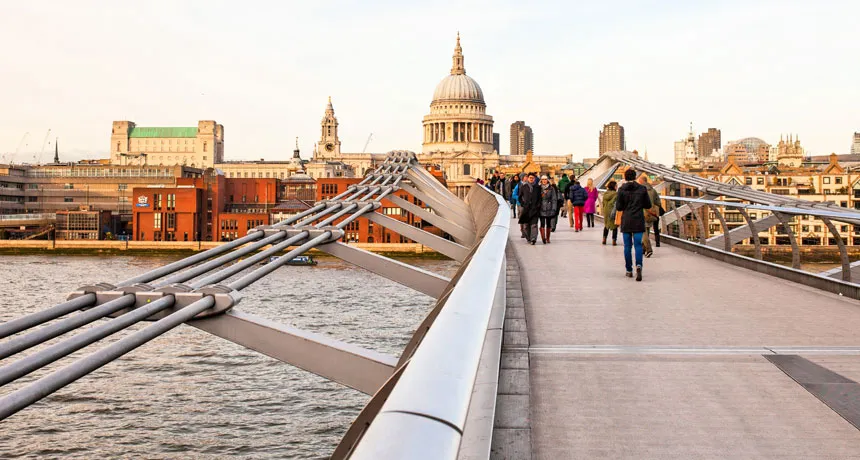
SWINGING BRIDGE When it first opened, crowds on the Millennium Bridge in London (shown) caused the bridge to sway wildly. Scientists have made improved simulations to determine the conditions that lead to such wobbly bridges.
Cedric Weber/Shutterstock







